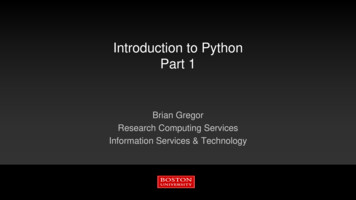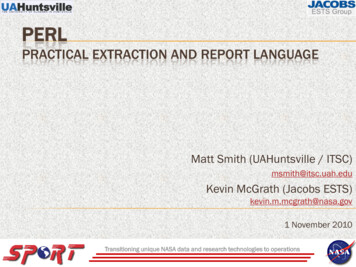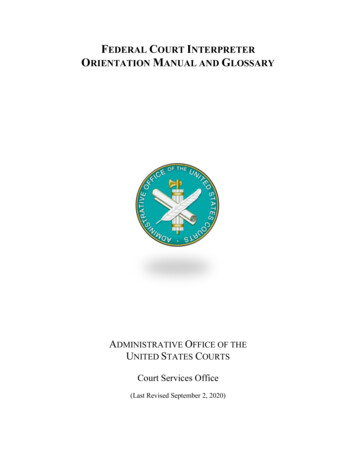
Transcription
FEDERAL COURT INTERPRETERORIENTATION MANUAL AND GLOSSARYADMINISTRATIVE OFFICE OF THEUNITED STATES COURTSCourt Services Office(Last Revised September 2, 2020)
TABLE OF CONTENTSMEMBERS OF MANUAL WRITING COMMITTEE . 6PREFACE . 7INTRODUCTION. 8CHAPTER 1: OVERVIEW OF THE FEDERAL JUDICIAL SYSTEM. 9I.Introduction . 9II.Federal and State Courts . 9A.Federal. 9B.State. 9III.Types of Federal Courts . 9A.District Courts . 9B.Courts of Appeals . 9C.The Supreme Court . 10IV.Federal Court Cases . 10A.Jurisdiction . 10B.Civil Cases . 10C.Criminal Cases . 10V.Bringing a Case in Federal Court. 10A.Civil Cases . 11B.Criminal Cases . 11VI.Pretrial Activity . 11A.Civil Cases . 11B.Criminal Cases . 11VII.The Trial. 11A.The Jury . 12B.The Judge . 12C.Role of Judge and Jury . 12D.The Lawyers. 12E.The Parties . 13F.The Witnesses . 13G.Court Personnel . 13H.Adversary Process . 132
I.Standards of Proof. 13J.Admission of Evidence . 14K.Sentencing . 14VIII.The Appeal Process. 14A.Who Can Appeal . 14B.Types of Appellate Decisions . 14C.Appellate Procedure . 14D.Appellate Opinions . 15E.Supreme Court Review . 15CHAPTER 2: FEDERAL CRIMINAL PROCEEDINGS . 16I.Arrest and Booking . 16II.Interview with Defense Attorney . 16III.Pretrial Services Interview . 16IV.Initial Appearance . 16A.Charges . 16B.Pretrial Release . 16C.Detention Hearing . 17D.Nebbia Hearings. 17V.Preliminary Examination . 17A.VI.A.Grand Jury Proceedings . 17Pretrial Preparation and Motions . 17Pretrial Motions . 18VII.Case Disposition Without Trial: The Guilty Plea . 18VIII.Status Conferences . 18IX.Criminal Bench Trials . 18X.Criminal Jury Trials . 18A.Impaneling of the Jury . 18B.Judge’s Initial Jury Instructions . 19C.Opening Statements . 19D.The Prosecution’s Case . 19E.The Defense Case . 19F.Rebuttal . 19G.Closing Arguments . 193
H.Jury Instructions . 19I.Jury Deliberation . 20J.Verdict. 20K.Presentence Report. 20L.Sentencing Hearing . 20XI.Misdemeanor Cases . 21XII.Group Hearings and Multiple Defendant Cases. 21CHAPTER 3: OVERVIEW OF COURT INTERPRETING . 22I.Interpreter Skills. 22II.Language Skills . 22III.Modes of Interpretation. 23A.Simultaneous . 23B.Consecutive . 23C.Sight Translation . 24IV.V.Accuracy of Performance. 25Ethical Obligations. 26VI.Language Style and Register. 26VII.Interpreters in the Courtroom. 26A.Location of Interpreters in Court . 26B.Aids to the Interpreter . 27C.Number of Interpreters per Proceeding: Teamwork . 27D.Challenges and Corrections to Interpretation. 27VIII.Simultaneous Interpretation of Recorded Audio. 28CHAPTER 4: INTERPRETER SUPERVISION AND CONTRACTING . 29I.Orientation of Interpreters. 29II.Administration of Oath . 29III.Staff Interpreters . 29IV.Contract Court Interpreters . 30APPENDIX 1: THE COURT INTERPRETERS ACT . 33APPENDIX 2: VOLUME 5 OF THE GUIDE TO JUDICIARY POLICY . 38APPENDIX 3: COURT INTERPRETER ETHICS AND PROTOCOL . 39APPENDIX 4: COURT INTERPRETER CERTIFICATION . 41APPENDIX 5: THE TELEPHONE INTERPRETING PROGRAM (TIP) . 424
APPENDIX 6: COURTROOM LAYOUT . 44GLOSSARY . 475
MEMBERS OF MANUAL UPDATE COMMITTEERafael CarrilloSupervisory Staff Court Interpreter, District of New MexicoLaura García-HeinStaff Court Interpreter, District of NebraskaMargarita Lloyd-GodskStaff Court Interpreter, Southern District of FloridaJulie MeeksPrograms Specialist, District Court Administration DivisionRita PomtreeDirector of Courtroom Services, Western District of TennesseeMarcia ReslerStaff Court Interpreter, District of ArizonaJavier A. SolerPrograms Specialist, District Court Administration DivisionMEMBERS OF MANUAL WRITING COMMITTEE 1Douglas C. DodgeFormer District Court Executive, Eastern District of New YorkDena J. Kohn-RizzoFormer Supervisory Interpreter, Southern District of New YorkRobert M. MarchFormer Clerk of Court, District of New MexicoEliseo L. MartínezFormer Staff Interpreter, Western District of TexasEdward B. RockFormer Supervisory Interpreter, District of ArizonaSofia ZahlerFormer Supervisory Interpreter, Central District of CaliforniaThis committee was appointed in 1988 by the Director's Federal Court Interpreter Advisory Board.Acknowledgments for contributions are due to many interpreters and professionals in the field of linguistics.16
PREFACELinguistic diversity in the United States is evidenced by the increasing need forinterpreters in the courts. In 1990, over 66,000 judicial proceedings required interpreters,however, in more recent years these numbers have grown to approximately 325,000 judicialproceedings requiring interpreters in about 119 different languages each year. Many districts areexperiencing a growing population of Limited English Proficiency (LEP) individuals. Althoughthe use of interpreters by government agencies has become common practice, the recognition ofthe importance of professional interpreting in the courts is a relatively recent phenomenon in theUnited States. State and federal court opinions, such as United States ex. rel. Negrón v. State ofNew York, 434 F.2d 386 (1970), have indicated that the right to an interpreter was protectedunder the Constitution. In that case, opining on the importance of court interpreting, Judge IrvingR. Kaufman wrote: “Not only for the sake of effective cross examination, however, but as amatter of simple humaneness, Negrón deserved more than to sit in total incomprehension as thetrial proceeded.”In 1978, after an extensive review of interpreting in the federal courts, Congress passedthe Court Interpreters Act, 28 U.S.C. § 1827, in order "to provide more effectively for the use ofinterpreters in courts of the United States." This Act requires the Director of the AdministrativeOffice of the United States Courts to set the standard for certification of interpreters who serve inthe federal courts. The Administrative Office (AO) facilitated quality interpreting by institutingcertification testing, compensation standards, regulations and statistical reporting and trainingprograms when deemed appropriate. To date, there are certified interpreters in Haitian Creole,Navajo, and Spanish (which constitutes about 96 percent of total interpreter usage). There arealso Otherwise Qualified interpreters in many other languages, including American SignLanguage. On November 19, 1988, President Ronald Reagan signed Public Law 100-702, theJudicial Improvements and Access to Justice Act, which made numerous amendments to theCourt Interpreters Act. These amendments provide for the use of interpreters in grand jury andpretrial proceedings, mandate the use of criterion-referenced testing criteria (which is a methodof objective measure) and set forth criteria for expanded certification of other languages deemednecessary by the Judicial Conference of the United States. The Court Interpreters Act, 28 U.S.C.§1827 provides payment for interpreting services for "judicial proceedings instituted by theUnited States." Most civil and bankruptcy proceedings are excluded because they are notinstituted by the United States.This manual outlines the major accomplishments that have occurred in the interpretingprofession and serves as a guide for both new and experienced court interpreters to familiarizethemselves with the Judiciary’s expectations of court interpreters and the importance of courtinterpreters in the administration of justice. The manual was created with the advice and input ofmembers of the Court Interpreters Advisory Group (CIAG). The CIAG was created to assist theAO in addressing current critical issues in and improvements to the court interpreting program.7
INTRODUCTIONThis manual was created and revised at the recommendation of the Court InterpretersAdvisory Group (CIAG). It was the desire of the CIAG that the manual, supplemented by videoresources and online modules, be created to serve as training resources for court interpreters andinterpreter coordinators providing services for the federal courts.The primary purpose of this orientation manual and glossary is to provide contract andstaff court interpreters with an introduction and reference to the federal court system, as well asto document best practices for interpreters in the courts. The secondary purpose is to serve as acourt interpreting reference for judicial officers and for clerks of court and their staff.8
CHAPTER 1: OVERVIEW OF THE FEDERAL JUDICIAL SYSTEMI.IntroductionAlthough federal court interpreting occurs almost exclusively at the district court level, thefollowing information regarding the court system will help interpreters develop an overall viewof the court structure. The limited information presented in this chapter and in this manual shouldbe considered only a primer towards a more comprehensive knowledge of the subject matter.The following material is reproduced verbatim from the Federal Judicial Center brochure,Welcome to the Federal Courts. 2II.Federal and State CourtsThere are two kinds of courts in the United States.A. FederalFederal courts are established by the U.S. government. There are some 1,500 federaljudges and about one million cases are brought each year in federal courts. Nearly 80% ofthese cases are bankruptcy filings and approximately 10% are minor criminal cases.B. StateState courts are established by a state, or by a county or city within the state. There arealmost 30,000 state court judges, and the number of state court cases exceeds 27 million eachyear, not including traffic and parking violations. The cases individual citizens are mostlikely to be involved in—such as robberies, traffic violations, broken contracts, and familydisputes—usually come before state courts.III.Types of Federal CourtsArticle III of the Constitution calls for a Supreme Court and whatever other federal courtsCongress considers necessary. There are three types of federal courts.A. District CourtsCongress has divided the country into 94 federal judicial districts, each with its ownU.S. District Court. The district courts are the federal courts where cases are tried,witnesses testify and juries serve. Each district court has a separate bankruptcy court.B. Courts of AppealsCongress has grouped the districts into 12 regions, called circuits, each with a court ofappeals. There is also a federal circuit, which covers the entire country. If a person loses atrial in a district court, that person can appeal the case to the court of appeals, which willreview the case to see if the district court judge applied the law correctly. The courts of2FED. JUDICIAL CTR., WELCOME TO THE FEDERAL COURTS (1996).9
appeals also review cases decided by some federal agencies, such as the National LaborRelations Board.C. The Supreme CourtThe U.S. Supreme Court in Washington, D.C., is the most famous federal court.Cases from the court of appeals in each circuit and from the state supreme courts can beappealed to the Supreme Court, but the Supreme Court does not have to hear the cases itis asked to review and, in fact, agrees to hear only a very small percentage of them.IV.Federal Court CasesA. JurisdictionJurisdiction refers to the kinds of cases a court is authorized to hear. Federal courts don’thave the same broad jurisdiction that state courts have. Federal court jurisdiction is limited tothe kinds of cases listed in the Constitution (Article III, Section 2). Usually, federal courtsonly hear cases involving the Constitution, laws passed by Congress, cases in which theUnited States is a party, cases involving foreign diplomats, and some special kinds of cases,such as incidents at sea and bankruptcy cases. Federal courts also hear cases that are based onstate laws but that involve parties from different states.B. Civil CasesLawyers use the term “party” to describe a participant in a civil case. A party can be aperson or a corporation, but, in either situation, a civil case involves a claim by one party (theplaintiff) that another party (the defendant) failed to carry out a legal duty, such as the dutynot to harm others through carelessness or the duty to honor the terms of a contract. If a courtfinds that a defendant failed to carry out a legal duty, it may order the defendant to paycompensation to the plaintiff to make up for the harm. Most federal court cases are civilcases, such as equal employment opportunity claims, claims for benefits under federalprograms, and suits against companies that may have violated federal antitrust laws. Appealsto the courts of appeals for review of federal agency decisions are also federal civil cases.C. Criminal CasesIn a criminal case, a party (the defendant) is accused of committing a crime—an actionconsidered to be harmful to society as a whole, not just to a specific person. Most crimesconcern matters that the Constitution leaves to the states, and thus, compared with thenumber of state criminal laws and cases, there are few federal criminal laws and cases.Federal criminal laws, for example, deal with robbing banks whose deposits are insured by afederal agency, importing drugs illegally into the country, or using the U.S. mails to swindleconsumers.V.Bringing a Case in Federal CourtFor a court to decide a controversy, a person must bring it to court. Also, the controversymust involve a legal question— courts don’t resolve every type of disagreement.10
A. Civil CasesA federal civil case begins when someone, or someone’s lawyer, files a paper with theclerk of the court that states a claim against another party, charging a failure to fulfill a legalduty. In lawyers’ language, the plaintiff files a complaint against the defendant. Thedefendant may then file an answer to the complaint.B. Criminal CasesA criminal case begins when the U.S. attorney (a lawyer for the executive branch ofgovernment) or an assistant tells a federal grand jury about evidence that indicates a specificperson or organization committed a crime. If the grand jury agrees that there is enoughevidence to show that the accused party probably committed the crime, it issues a formalaccusation, called an indictment. The accused party— the defendant—is then brought beforea judge for arraignment and is asked to plead “guilty” or “not guilty.” If the defendant pleadsguilty, a time is set for sentencing. If the defendant pleads not guilty, a time is set for trial.Grand jury indictments are used mainly for felonies, the more serious crimes. Formisdemeanors, the less serious crimes, and for some felonies, the U.S. attorney issues aninformation, which takes the place of an indictment.VI.Pretrial ActivityA. Civil CasesPretrial conferences are held before trials to identify the issues for trial and to avoidwasting time during the trial on uncontested or irrelevant issues. Through pretrial“discovery,” the lawyers examine each other’s documents and interview each other’switnesses. This pretrial activity often leads to settlement of the case before trial.B. Criminal CasesLawyers for criminal defendants conduct thorough investigations before trial, frequentlyfocusing on whether the government’s evidence was obtained legally. The FourthAmendment to the Constitution forbids “unreasonable searches and seizures,” and theSupreme Court has ruled that illegally obtained evidence usually can’t be used at trial.Resolution of these evidentiary issues before the trial can result either in the government’sdropping the charges or in the defendant’s deciding to plead guilty.VII.The TrialAlthough there is an absolute right to trial in both civil and criminal cases, trials are oftenemotionally and financially draining, and a person may not wish to exercise the right to trial.Also, if the court grants a summary judgment to either party or decides to dismiss the case,no trial is held. Thus, over 90% of all civil cases never come to trial, and approximately 80%of criminal defendants plead guilty and are sentenced without a trial.11
A. The JuryThe group of people seated in a boxed-in area on one side of the courtroom is the trialjury (or petit jury). For federal criminal cases, there are usually 12 jurors, but for federal civilcases the number varies between 6 and 12. Prospective jurors are selected at random fromlists of registered voters in the district or lists of licensed drivers. Before each trial,prospective jurors answer questions to help the judge and lawyers determine whether thejurors can be impartial in deciding the particular case. If the judge or lawyer believes that ajuror cannot decide the case impartially (for example, because the juror knows one of theparties), he or she will then strike the prospective juror for cause. This means the prospectivejuror cannot sit on the jury. In addition to challenges for cause, the lawyers have the right toreject a certain number of jurors from the panel without giving any justification.B. The JudgeFederal appellate and district judges are appointed by the President, with the approval ofthe Senate (Constitution, Article II, Section 2). Federal judges are sometimes said to have lifetenure because they can hold office for as long as they wish (Constitution, Article III, Section1), subject to removal only by Congress through a rarely used process called impeachmentand conviction for “treason, bribery, or other high crimes and misdemeanors” (Constitution,Article II, Section 4). Article III of the Constitution also prohibits the lowering of the salariesof federal judges. These two constitutional protections—life tenure and unreduced salary—allow federal judges to make legal rulings, even unpopular ones, without fear of losing theirjobs or having their salaries cut.Bankruptcy judges and magistrate judges assist the district judges by conducting some ofthe proceedings in federal courts. Bankruptcy judges hear almost all bankruptcy cases.Magistrate judges prepare the district judges’ cases for trial and conduct trials in non-felonycriminal cases and in civil cases when both parties agree to a hearing before a magistratejudge. Bankruptcy judges and magistrate judges do not have life tenure, but serve for anappointed term.C. Role of Judge and JuryIf the parties choose a jury trial, the jury must determine the facts over which the partiesdisagree. If the parties decide to leave the fact-finding task to the judge, the trial is called abench trial. In either kind of trial, the judge decides what legal standards apply and whetherany of the evidence that the parties want to use is illegal or improper. The judge alsoconducts the proceedings and sees that order is maintained. In a jury trial, the judge givesinstructions to the jury, explaining the relevant law, how the law applies to the case beingtried, and what questions the jury must decide.D. The LawyersDuring a trial, the lawyers for each party are either sitting at the counsel tables orspeaking to the judge, a witness, or the jury. In criminal cases, the lawyer who prosecutes theclaim is the U.S. attorney (or an assistant). The U.S. attorney
only hear cases involving the Constitution, laws passed by Congress, cases in which the United States is a party, cases involving foreign diplomats, and some special kinds of cases, such as incidents at sea and bankruptcy cases. Federal courts also hear cases that are based on state laws but that involve parties from different states.
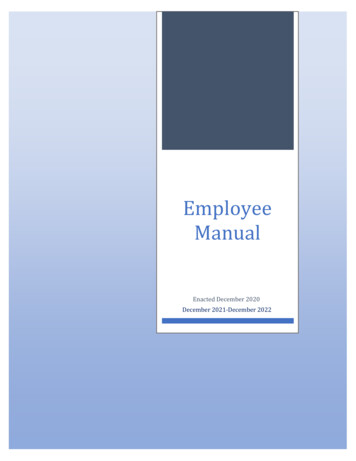

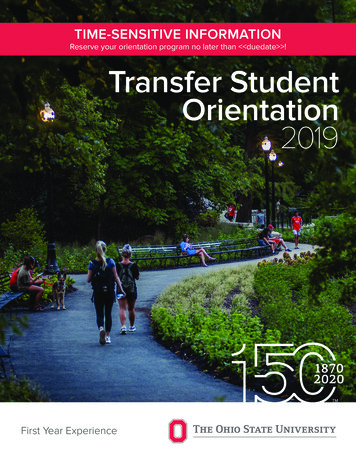
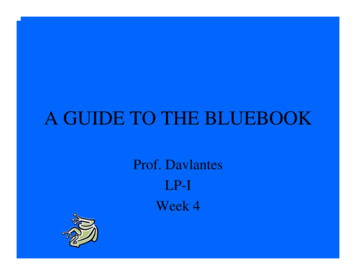
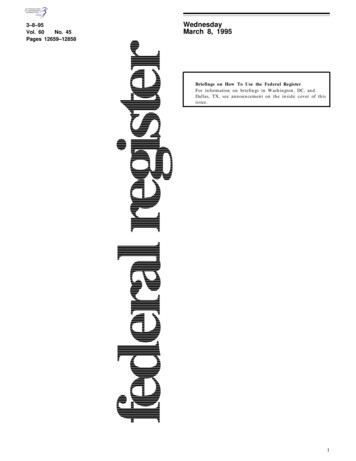
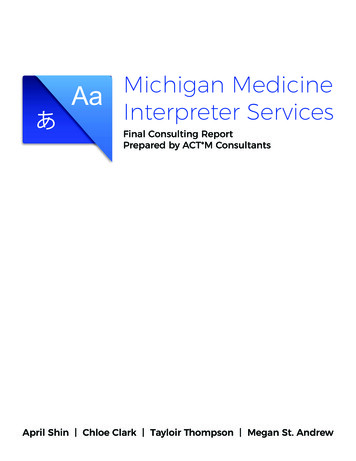
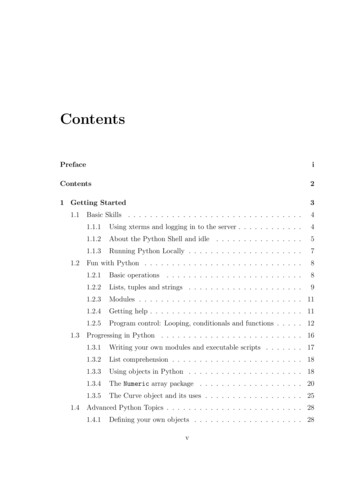
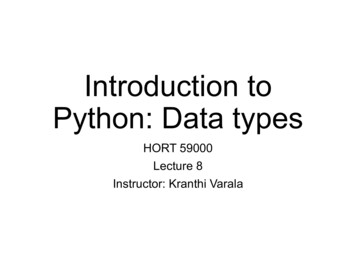
![JHUMPA LAHIRI [b. 1967] Interpreter of Maladies](/img/16/lahiri-interpreter-of-maladies-full-text.jpg)
